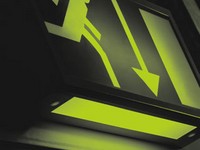Our Services
services & maintenance
click hereEMERGENCY LIGHTING

UK Emergency Lighting Regulations & Fire Alarm Testing Regulations
The introduction of the Regulatory Reform (Fire Safety) Order 2005 has brought together all the elements of fire safety. Emergency lighting is primarily intended to provide sufficient illumination to enable people to see their way safely out of a building in cases of emergency and falls into five categories:
Emergency Escape Lighting
Standby Lighting
Escape Route Lighting
High Risk Task Area Lighting
Open Area (Anti-Panic) Lighting
Complex Central Battery Systems
It is vital that emergency lighting comes on if the normal lighting fails. It needs to be sufficiently bright, illuminated for enough time, and the light sources so positioned that the occupants of a building can be evacuated safely in an emergency. BS5266 Emergency Lighting, the Code of Practice for the emergency lighting of premises, offers guidance on the positioning of emergency luminaires, minimum height levels, acceptable glare levels, together with minimum routine testing schedules.
RAYDAW FIRE PROTECTION is committed to providing its customers with the highest level of service and support, from initial design concept through each stage of installation to the maintenance of the system throughout its operating life. The following is a summary of just some of the areas of support offered by our team of fully trained service and support engineers.
System commissioning
System servicing and maintenance
Service and maintenance contracts
Get your fire certificate In order to gain and maintain a fire certificate, documented proof of system maintenance must be available. Failure to service your equipment not only puts the future of your business at risk, it endangers lives.


















